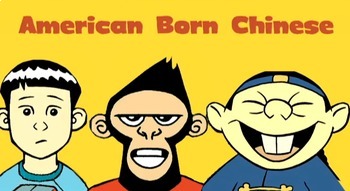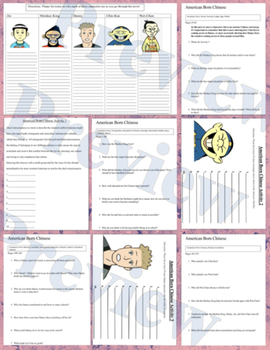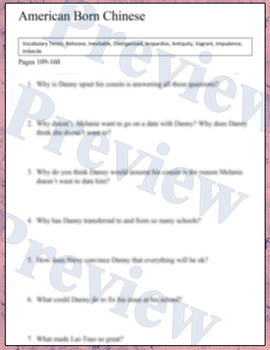Complete Unit for Gene Luen Yang's graphic novel American Born Chinese
Buchmiller's Classroom
446 Followers
Grade Levels
5th - 12th, Homeschool
Subjects
Resource Type
Standards
CCSSCCRA.R.1
CCSSCCRA.R.2
CCSSCCRA.R.3
CCSSCCRA.R.4
CCSSCCRA.R.5
Formats Included
- PDF
- Easel Activity
Pages
26 pages
Buchmiller's Classroom
446 Followers
Easel Activity Included
This resource includes a ready-to-use interactive activity students can complete on any device. Easel by TPT is free to use! Learn more.
Description
Be sure to check out the preview available on this page where you can view some of the pages in this unit.
This is a unit for Gene Luen Yang's graphic novel American Born Chinese. The product does come with an answer guide for the reading questions. The unit breaks the novel into 6 parts, it includes a character sheet to fill out while reading the novel, 60 comprehension questions that cover the whole novel (focusing on higher order thinking and visual literacy), vocabulary terms with each chapter of the novel, and 3 activities on the novel to go with it as well.
*****************************************************************************
Free Resources on Graphic Novels
- A list of 29 Graphic Novel Literary Terms
- Graphic Novel Class Resource Material
- A Graphic Novel Exam
Powerpoint Presentations on:
- An Introduction to Visual Literacy with Comics
- Introducing how to read comic panels
- How Comic Books are made
- The History of Racism in Comics
- Time, Closure, and Encapsulation in comic panels
- Background, Midground, and Foreground in Comics
- Bleed and Splash Panels
- Camera Angles in Comic Panels
Updated on 11/18/16
Updated on 8/2/2018
Total Pages
26 pages
Answer Key
Included
Teaching Duration
N/A
Report this resource to TPT
Reported resources will be reviewed by our team. Report this resource to let us know if this resource violates TPT’s content guidelines.
Standards
to see state-specific standards (only available in the US).
CCSSCCRA.R.1
Read closely to determine what the text says explicitly and to make logical inferences from it; cite specific textual evidence when writing or speaking to support conclusions drawn from the text.
CCSSCCRA.R.2
Determine central ideas or themes of a text and analyze their development; summarize the key supporting details and ideas.
CCSSCCRA.R.3
Analyze how and why individuals, events, and ideas develop and interact over the course of a text.
CCSSCCRA.R.4
Interpret words and phrases as they are used in a text, including determining technical, connotative, and figurative meanings, and analyze how specific word choices shape meaning or tone.
CCSSCCRA.R.5
Analyze the structure of texts, including how specific sentences, paragraphs, and larger portions of the text (e.g., a section, chapter, scene, or stanza) relate to each other and the whole.





